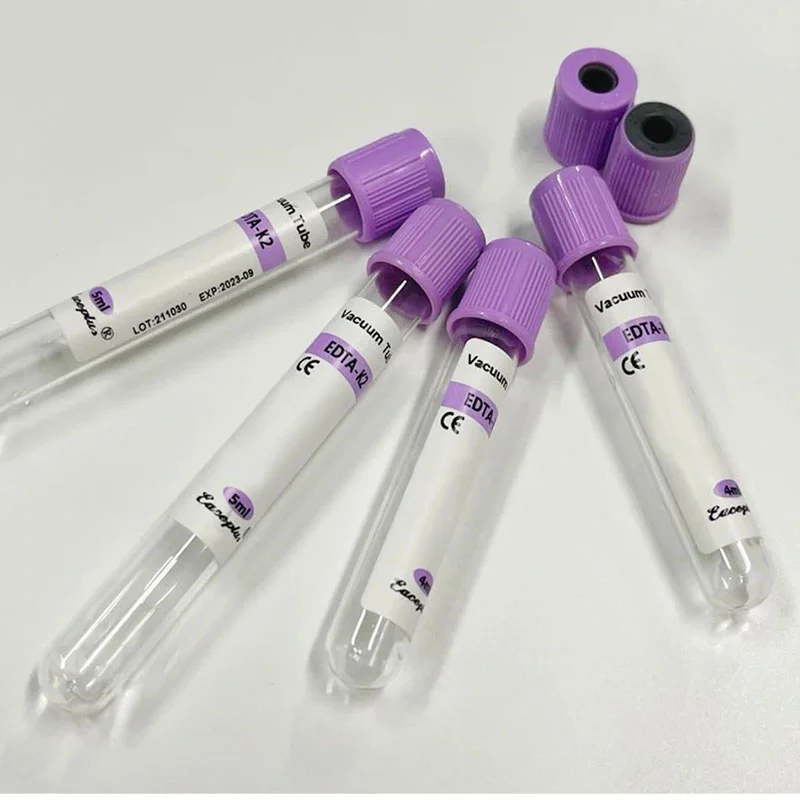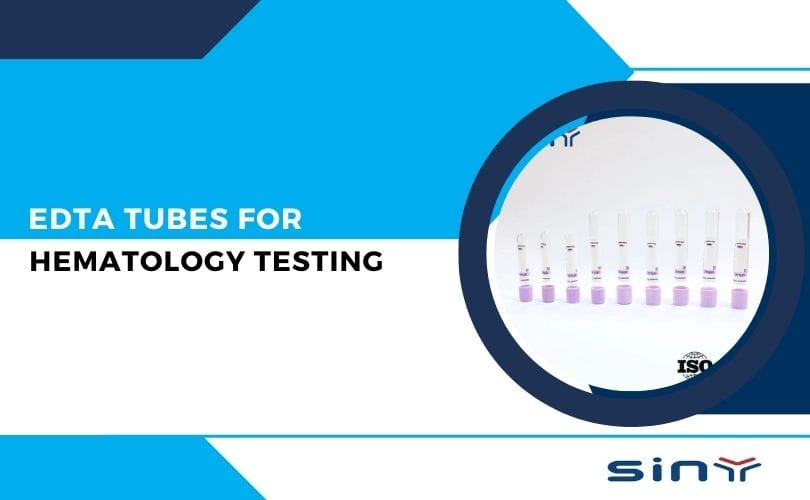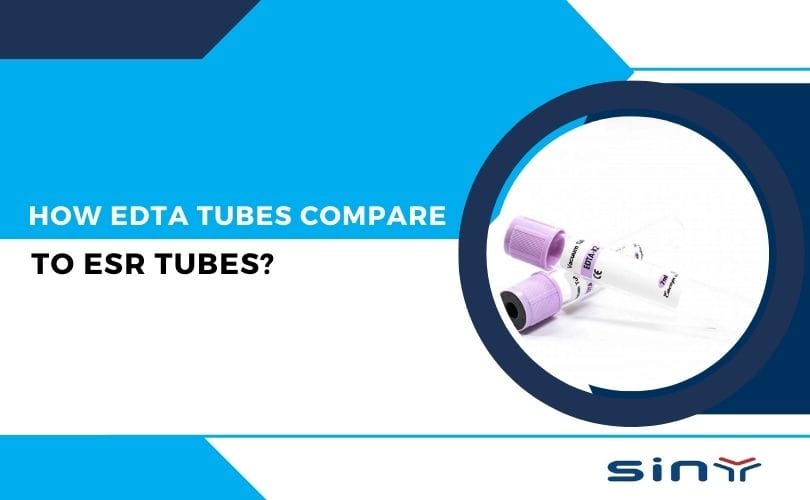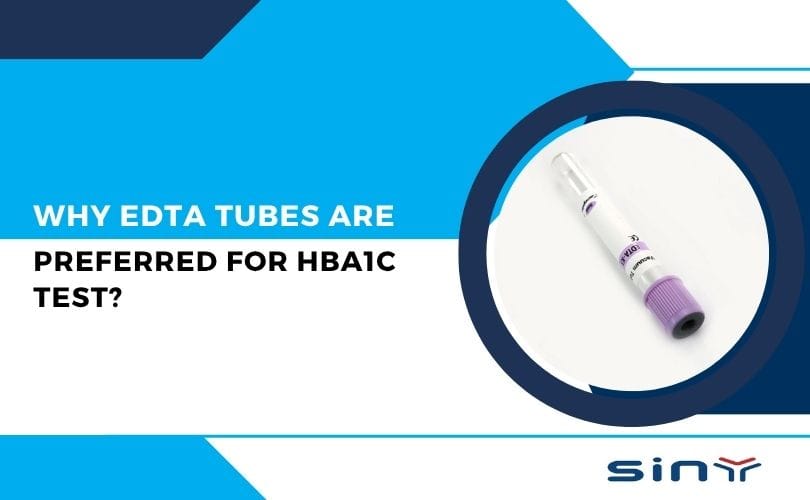Blood collection is a delicate science—quite literally. Whether you’re drawing blood for a routine checkup or a specialized diagnostic panel, the type of collection tube you use can directly influence your test results. Among the most commonly used blood collection tubes are EDTA tubes and gel separator tubes. Each serves a different purpose, and understanding how they compare can optimize both patient care and lab efficiency.
What Are EDTA Tubes?
EDTA Tubes, short for Ethylenediaminetetraacetic acid, is a strong anticoagulant that binds calcium ions, effectively halting the blood clotting process. This makes EDTA tubes essential for hematology and other cellular-based studies.

You’ll usually find them with lavender, purple, or pink tops, depending on regional practices and manufacturer specifications.
Available Types:
K2EDTA: Common in plastic tubes, known for being gentler on cells.
K3EDTA: Often used in glass tubes but can alter cell volume slightly due to osmotic shifts.
Core Uses of EDTA Tubes:
Complete Blood Count (CBC): Including WBC, RBC, platelets, hemoglobin
Blood Typing & Cross-Matching
HbA1c Testing
Microscopic Cell Analysis
Why EDTA Tubes Stand Out:
Preserve cell morphology: No distortion or lysis under proper conditions
Stable anticoagulation: Reduces pre-analytical errors
Ideal for molecular tests: Some forms support DNA/RNA integrity
For more on the benefits, explore this resource: Why EDTA Tubes Are Preferred for WBC Counts
What Are Gel Tubes?
Gel tubes, also known as Serum Separator Tubes (SST), are widely used in clinical chemistry and immunology. These tubes contain two key components:
Clot Activator
Inert Gel Barrier
After blood collection, the clotting process is initiated, and during centrifugation, the gel forms a physical barrier between the serum and blood cells. This makes the serum ready for analysis without any extra handling.
Common Applications of Gel Tubes:
Electrolyte Panels
Liver and Renal Function Tests
Hormonal Assays (TSH, insulin, etc.)
Serological Tests (HIV, Hepatitis)
Therapeutic Drug Monitoring
Advantages of Gel Tubes:
Clean, high-quality serum samples
Improved sample stability
Compatibility with automated systems
Reduced risk of hemolysis and contamination
For detailed product info, check out Gel Tubes from Siny Medical or watch their product demos on YouTube.
EDTA Tubes vs Gel Tubes: Side-by-Side Comparison
Let’s get into the nitty-gritty. Here’s a deep dive into how EDTA Tubes Compare to Gel Tubes in every aspect that matters.
| Parameter | EDTA Tubes | Gel Tubes (SST) |
|---|---|---|
| Additive | K2 or K3 EDTA (anticoagulant) | Clot activator + inert separation gel |
| Sample Type | Whole blood or plasma | Serum (after clotting) |
| Primary Use | Hematology, blood typing, HbA1c, DNA/RNA testing | Chemistry panels, hormonal & serological assays |
| Color Code | Purple, lavender, pink | Yellow or red/grey (tiger top) |
| Centrifugation Speed | 1500–2000g for 10 min | 3000–3500g for 10–15 min |
| Pre-centrifugation Handling | Mix 8–10 times gently | Allow clotting for 20–30 minutes |
| Sample Stability | Short-term, cells degrade over time | Long-term stability due to gel protection |
Need more specs? Visit:
When to Use EDTA Tubes vs Gel Tubes in the Lab
EDTA Tubes are best used when you need:
Accurate counts of blood cells
Clear cell morphology
DNA/RNA extraction
Gel Tubes are ideal when you need:
Clear serum for chemistry panels
Better sample transport conditions
Extended stability for stored samples
For further reading: EDTA Tubes vs Other Blood Collection Tubes
Operational Best Practices for Lab Technicians
Understanding the technical side of handling these tubes is just as important as knowing what goes in them.
EDTA Tubes Handling Tips:
Invert gently 8–10 times immediately after collection.
Avoid delay; improper mixing can lead to clotting.
Use for tests that require cellular integrity.
Gel Tubes Handling Tips:
Let the sample sit upright for 20–30 minutes before spinning.
Ensure the gel forms a visible, stable barrier after centrifugation.
Avoid vigorous shaking post-centrifugation—it may disrupt the gel layer.
Labeling & Sample Identification:
Always label tubes before collection to avoid mix-ups. Waterproof labels are a must, especially when dealing with gel tubes where visibility post-centrifugation is crucial.
For inquiries and lab supply details, reach out via the Contact Page.
Choosing the Right Tube for Clinical Applications
Hematology Labs & Blood Banks:
EDTA tubes are your best friends. They preserve the shape and structure of cells, making them perfect for diagnostic smears and automated cell counts.
Internal Medicine & Biochemistry Labs:
Gel tubes shine here. From liver function tests to hormone panels, serum from gel tubes gives reproducible and clean results.
Molecular Diagnostics:
Many DNA/RNA tests require specific anticoagulants. EDTA works well for many, but always check compatibility.
Field Collection & Remote Clinics:
Gel tubes offer stability during transport and are less sensitive to minor temperature shifts.
Explore the full product lineup here: EDTA Blood Collection Tubes
Summary
- EDTA Tubes are essential for hematology, blood typing, and molecular diagnostics due to their anticoagulant properties.
- Gel Tubes excel in biochemistry, immunology, and hormonal testing by providing high-quality serum.
- Proper handling (mixing, clotting time, centrifugation) is critical for accurate results.
Choosing the right tube enhances diagnostic accuracy, lab efficiency, and patient care.
FAQs
Can I use EDTA tubes for serum-based tests?
No, EDTA tubes yield plasma, not serum. For serum-based assays, always opt for gel tubes.
Are gel tubes suitable for CBC or blood typing?
Not at all. Gel tubes lack anticoagulants, making them unusable for cellular studies or blood typing.
Which is better for long-distance sample transport?
Gel tubes are more stable and protect the serum, making them ideal for shipping.
Are there quality differences between manufacturers?
Yes. Always choose certified tubes with proven performance. Explore reliable products at Siny Medical.
Should I go with K2 or K3 EDTA?
Generally, K2EDTA is preferred due to less osmotic disruption. Check out this guide to EDTA types.







